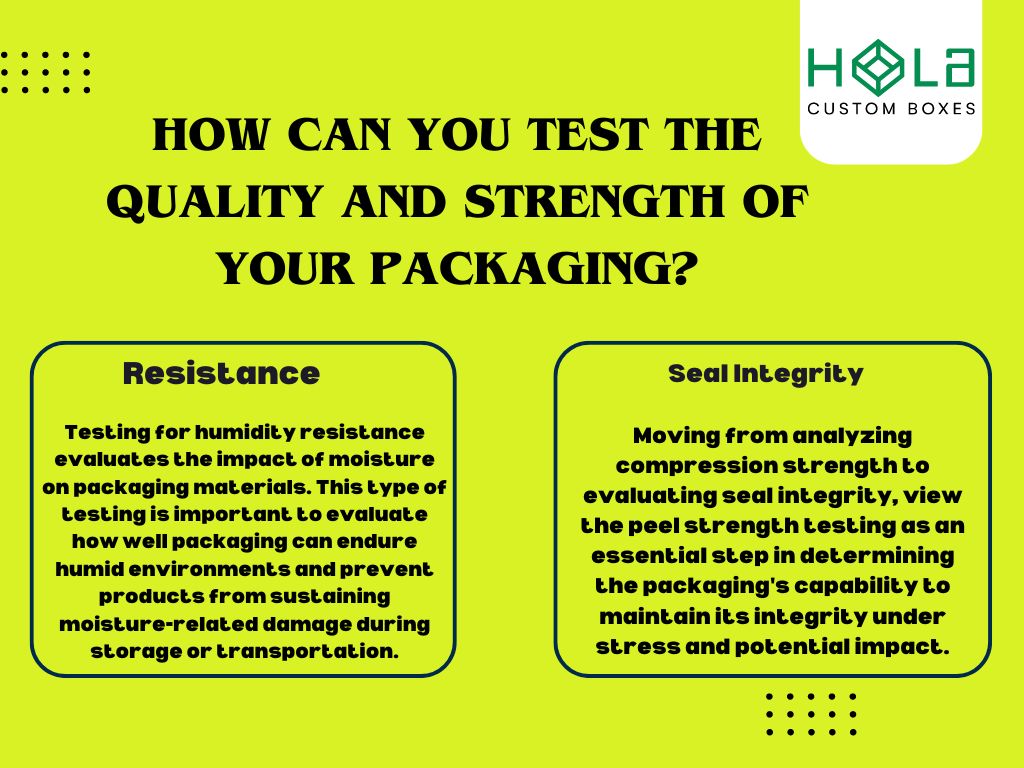How Can You Test The Quality And Strength of Your Packaging?
2025-08-11 14:23:26
To test the quality and strength of your packaging, conduct drop tests to assess durability, compression tests for load capacity, and seal integrity assessments. Utilize vibration tests to evaluate packaging strength, and humidity resistance testing for moisture impact. Perform stacking durability examination to guarantee stacking strength. Finally, conduct an overall packaging reliability check incorporating various tests to enhance protection for your goods. These steps are crucial for safeguarding your products during shipping.
Main Points
- Conduct drop tests to assess impact resistance and durability.
- Perform compression tests to determine load capacity and strength.
- Evaluate seal integrity through peel strength testing.
- Use vibration tests to check packaging resilience against movement.
- Test packaging materials for humidity resistance to prevent moisture damage.
Drop Test Evaluation
Drop tests assess the durability of packaging by replicating real-world shipping and handling conditions. These tests are essential for evaluating packaging durability and determining the resilience of packaging materials.
International standards set by organizations like ISTA, ASTM, and FedEx provide guidelines for conducting drop tests. Understanding the failure criteria for drop tests is important as it guarantees that products remain protected during transportation.
Compression Strength Analysis

To assess the durability and load capacity of packaging materials under pressure, compression strength analysis is essential for industries requiring damage-free stacking of boxes during transportation.
This analysis involves conducting a compression test to determine how much load the packaging materials can withstand before deformation occurs.
The McKee Formula, which factors in parameters like Edge Crush Test (ECT), Combined Board Test (CBT), and box perimeter, is commonly used to calculate compressive strength.
Seal Integrity Assessment
Moving from analyzing compression strength to evaluating seal integrity, view the peel strength testing as an essential step in determining the packaging's capability to maintain its integrity under stress and potential impact.
Peel strength testing assesses the adhesive strength of seals, especially vital for items like food or medical supplies that require a secure closure. By evaluating the seal integrity through this test, you can understand how well the packaging withstands handling and transportation stresses.
This evaluation is particularly important for corrugated boxes and other packaging used for shipping or storing goods. Understanding the adhesive strength of the seals provides valuable insights into the packaging's ability to protect its contents and prevent leakage or contamination.
Ensuring a strong seal through peel strength testing is key to maintaining the quality and effectiveness of the packaging for items that necessitate a tight and secure enclosure.
Vibration Test Procedure
Evaluating the durability of packaging materials through vibration testing is essential in ensuring their ability to withstand transportation conditions. Vibration testing simulates the rigorous transport conditions packages endure, helping assess the packaging strength against continuous vibrations.
Common types of vibration tests like random and sine vibrations are employed to replicate real-world scenarios. During these tests, monitoring product movement and noise is vital to detect any potential issues.
By subjecting the packaging to vibration testing, it becomes possible to verify that it can endure the shifting and movements that occur during transportation. This process aids in identifying weaknesses in the packaging design and materials, allowing for necessary improvements to be made to enhance the overall protection of the products.
Conducting thorough vibration tests is a proactive approach to ensuring that the packaging can uphold its integrity under demanding transport conditions.
Humidity Resistance Testing
Testing for humidity resistance evaluates the impact of moisture on packaging materials. This type of testing is important to evaluate how well packaging can endure humid environments and prevent products from sustaining moisture-related damage during storage or transportation.
By subjecting the packaging to controlled humidity levels, manufacturers can determine its performance under varying environmental conditions. The results obtained from humidity resistance testing play a significant role in selecting the most suitable packaging materials for specific scenarios.
Ensuring that packaging can withstand moisture is essential to preserving the integrity of the products it contains. Therefore, conducting humidity resistance testing is a crucial step in guaranteeing that your packaging meets the necessary quality and strength standards to protect your goods effectively.
Make sure to take this aspect into account when assessing the overall durability of your packaging solutions.
Why Packaging Matters in a Crowded Market
In today’s fast-paced and competitive marketplace, brands need more than just a great product to get noticed—they need packaging that captivates. Custom boxes with logos have the power to turn ordinary items into irresistible must-haves. From vibrant colors that catch the eye to unique shapes that spark curiosity, every design choice can make your brand stand out. Premium materials convey quality, while consistent branding builds trust and loyalty.
Turning Packaging into a Brand Experience
Memorable packaging doesn’t just protect your product—it tells a story and creates an emotional bond with customers. When your design resonates, it inspires sharing, strengthens brand recognition, and makes it easier for consumers to choose you over competitors. In a world full of options, great packaging can be the difference between blending in and shining brightly on the shelves.
Overall Packaging Reliability Check
For a thorough evaluation of your packaging's reliability, focus on conducting drop tests to assess impact resistance and durability. Drop tests involve simulating real-world scenarios where packaged products may be accidentally dropped during handling or transportation. By subjecting your packaging to these tests, you can gauge its ability to protect the items inside from damage due to impacts.
Moreover, performing compression tests will help you determine the strength and durability of your packaging under pressure conditions. This is essential to guarantee that your packaging can withstand stacking or heavy loads without compromising the integrity of the contents.
Climate tests are also vital to assess how your packaging holds up against environmental factors like temperature and humidity, which can affect the quality and safety of your products during storage and transit. By incorporating these tests into your quality control processes, you can enhance the overall reliability of your packaging and provide better protection for your goods.
